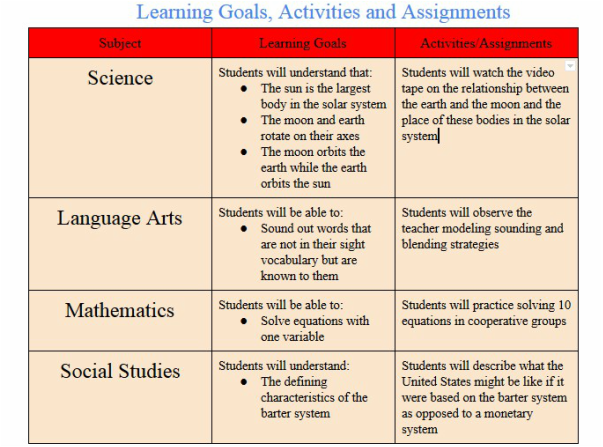Stage 2: Determine assessment evidence
After you understand the Stage 2 of the UbD framework you will be able to answer Challenge Question #2.
Challenge Question #2: Are we assessing everything we want to achieve or are we only using the easier ways to test?
Challenge Question #2: Are we assessing everything we want to achieve or are we only using the easier ways to test?
- Does the assessment match the outcome for which you are asking from your students?
- Complete the following activity to help you begin thinking about appropriate activities and assessments in alignment with the target goals.
Now that you have completed the verb activity, think about the most recent unit you taught. Did your assessment match your target?
Use the chart below to help you answer this question.
Use the chart below to help you answer this question.
According to Wiggins and McTighe (1998), there is a continuum on which a variety of assessment tools are effective to achieve student understanding, however frequent progress monitoring checks, observation, projects and conversations with students are necessary to make sure the target is in reach (p. 12). The key to UbD is that students can apply thier knowledge in context to show understanding.
When thinking about the six facets of understanding (explanation, interpretation, application, perspective, empathy, and self-knowledge), Wiggins & McTighe (1998) provide numerous examples to help teachers determine how best to assess understanding. Teachers can ask students to dialogue about subject material, defend conclusions, justify decisions, develop their own theories or explanations, and relate understandings to bigger the picture. Through explanation, teachers can identify understandings and clarify any areas that students may misunderstand (Wiggins & McTighe, 1998, pp. 85-88). Teachers can ask students to interpret stories, weave together their own stories, and extract main ideas from what they read, hear, or experience. Furthermore, teachers can use real-life situations and simulations to determine whether or not students are able to apply understandings in different contexts (Wiggins & McTighe, 1998, pg. 91).
The chart below gives examples of learning goals and activities or assignments that would help the student meet the learning goal.
When thinking about the six facets of understanding (explanation, interpretation, application, perspective, empathy, and self-knowledge), Wiggins & McTighe (1998) provide numerous examples to help teachers determine how best to assess understanding. Teachers can ask students to dialogue about subject material, defend conclusions, justify decisions, develop their own theories or explanations, and relate understandings to bigger the picture. Through explanation, teachers can identify understandings and clarify any areas that students may misunderstand (Wiggins & McTighe, 1998, pp. 85-88). Teachers can ask students to interpret stories, weave together their own stories, and extract main ideas from what they read, hear, or experience. Furthermore, teachers can use real-life situations and simulations to determine whether or not students are able to apply understandings in different contexts (Wiggins & McTighe, 1998, pg. 91).
The chart below gives examples of learning goals and activities or assignments that would help the student meet the learning goal.
Now that you understand how to determine the target objectives and how to identify appropriate activities and assessments, it is time to move to Stage 3 of the UbD unit plan.

